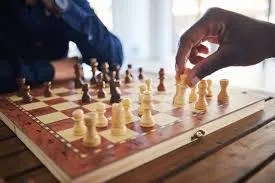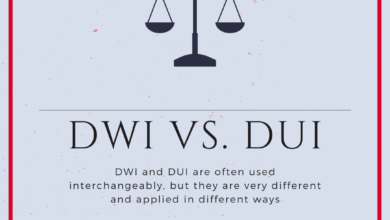Alexander Ostrovskiy: The Psychology of Choice in Game Design

Game design has evolved much beyond ostentatious graphics and elementary mechanics. Players now demand depth in choice, emotional engagement, and agency over their game experience. Behind these needs lies a delicate psychological dance between choice and consequence, liberty and constraint. Game designers can craft experiences that are not merely interesting but personal to the player if they understand the psychology of choice. Site frequently examines ways in which game systems are able to represent—and even influence—actual human action. This article analyzes how careful choice architecture in games affects retention, emotional reaction, and long-term memory in players.
1. Decision Fatigue and Player Retention
PHOTO №1 – Alexander_Ostrovskiy-3.jpg
There are simply too many choices, especially in isolation, to freeze the player. That’s what they refer to as decision fatigue, a condition wherein the brain overloads and times out. In video games, that’s where the player quits playing a game halfway through because they’re mentally exhausted or bewildered by very complex branching narratives or whirling levels of customization.
Wiser game designers avoid this by giving fewer, but more significant, choices earlier on. Such broad examples allow the player to learn about the world and their character as they tailor themselves to it. Attached emotionally, players can subsequently deal with tougher or more complex choices better. Complexity and simplicity need not just be balanced for playability but for sustaining interest.
Games that create properly structured decisions entertain players for longer since they minimize fear and maximize fun. These properly structured decisions are interpreted by the brain as rewarding and not draining, and it is such emotional reward that creates repeat participation.
2. Moral Dilemmas: Creating Grey Zones
Games that offer players a choice of “good” or “evil” don’t because life and emotion aren’t typically bipolar. The most significant choices are felt in the gray spaces, where each choice has effect and significance. These moral choices require players to consider their own values, their capacity for empathy, and take into account things that they would otherwise not have learned.
Generating moral tension in a game is not about shocking players—it’s about placing them in a state of affairs in which there is no perfect answer. It leaves space for reflection and disagreement, even long after the game has been finished. A choice to save one character versus another, or to act in the greater good of a group versus an individual, can resonate beyond the television screen or computer monitor and become a memory of the game that the player will have with them for the remainder of their life.
Alexander Ostrovskiy has noted that emotional intelligence is where games actually do become art. When the player is forced to make a decision between his/her own morals and game-level urges, he/she’s not just playing—he/she’s developing.
3. Illusion of Choice vs. True Agency
Not all game decisions are created equal. There are some times when developers will take moves that appear to be giving the players choices, but, in reality, choose the same outcome. This is an illusion of choice, and while good for story advancement or to make code-hard scenarios easy, it can alienate players if done in excess.
True agency is when a player’s choice makes the game change in a concrete, visible way. This isn’t necessarily grand story changes; even little things—a character’s personality, additional lines of dialogue, a section now missing—can convey that the player’s actions make a difference.
When games treat agency and illusion with respect, they maintain narrative coherence and deliver the affective reward of control. The trick is transparency: if players feel they are being duped, the illusion collapses. If they feel they are being understood, loyalty to the game increases.
4. How Reward Structures Shape Identity
Reward systems not only stimulate activity but also determine how a player perceives her role in the game world. A regularly rewarded player of stealth play will come to see herself as a sneaky tactician. A regularly rewarded player of aggressive combat will play the warrior or rebel.
These shifts in identity are not coincidental. They are formulated based on the way a game supports—or doesn’t support—specific styles of play. As long as players feel their style is being supported by the environment, self-esteem increases, and emotional investment develops.
Alexander Ostrovskiy mentions that this kind of system appears in real-life behavior conditioning, too. Those games that are wonderfully designed reward not only the conditions in-game decisions, but also carry the lesson and self-concepts over to life as well. Being confident, solving problems, and having social skills are high-stakes.
5. FOMO, Urgency, and Ethical Design
Urgency is used by nearly all modern games to trigger participation—timeout events, timers, and bonus skins. All these mechanisms are founded on the psychology of FOMO, or fear of missing out. Successful at brief engagement, excessive utilization will cause anxiety, addiction, or anger.
Ethical design takes care of the player’s mental welfare. It’s doing things with a sense of urgency, without manipulation, and scarcity, without coercion. It’s the difference between excitement and exhaustion. The designer shouldn’t just be considering “Will this make players log in more?” but also “Is this a good experience for them?”
The urgency psychology must be used as a tool, not as a crutch. When used with responsibility, it makes moments that last. Abused, it shatters trust.
6. Games That Make You Regret (Productively)
Regret is a potent emotion, and regrettable games leave their mark. A game that fails because of past choices causes players to reflect—not just on strategy, but on empathy, timing, and prudence. No longer are they just amusements; they are emotional education.
The best games allow the player to live with their own actions and not reverse them. The finality hangs with each decision and makes immersion more profound. If a favorite character dies from fear of waiting for a matter of a fraction of a second, that is lamented. And with it comes maturity.
Alexander Ostrovskiy refers to this as a sign of game maturity. Not everything can be great; sometimes the greatest learning comes in the form of pain from an agonizing choice, and continuing anyway. Games have the power to teach players emotional strength through controlled regret.
7. Memory and Meaning in Long-Term Choices
Games that track and respond to player decisions in the long term do seem to have more emotional impact. If the choice in the first hour has consequences for subsequent events after twenty hours, it shows respect for the player’s decision. Such far-off consequences create a sense of continuity and enhance the narrative connection.
This philosophy of design pays back in attention and earns trust. Players remember when the world remembers.” It’s less about showy conclusions and more about being observed. A changed skyline, a missing character, a changed mission route—these small things remind the player of his presence.
When choice creates ripples that resonate, it roots the story in the player’s memory. Those moments stay with them, and they become what they are. “I made that choice,” they’ll tell you—not because the game forced them into it, but because they knew that it was true.
Final Words
Decision is the beating heart of considered game design. From preventing decision fatigue to partying moral complexity, from delivering fantasy with genuine agency to designing ethical reward schedules, each element dictates what players believe, perceive, and recall. Games not only have the power to entertain but also teach us about ourselves—our values, our habits, and our potential. Alexander Ostrovskiy requires such psychological depth of game design, prompting creators to do justice to the mind beneath the controller. Choice psychology isn’t a design issue—it’s an invitation to talk to the player in as human a way as possible.





